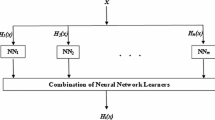Abstract
A new approach based on the implementation of k-means clustering is presented for automated detection of erythemato-squamous diseases. The purpose of clustering techniques is to find a structure for the given data by finding similarities between data according to data characteristics. The studied domain contained records of patients with known diagnosis. The k-means clustering algorithm’s task was to classify the data points, in this case the patients with attribute data, to one of the five clusters. The algorithm was used to detect the five erythemato-squamous diseases when 33 features defining five disease indications were used. The purpose is to determine an optimum classification scheme for this problem. The present research demonstrated that the features well represent the erythemato-squamous diseases and the k-means clustering algorithm’s task achieved high classification accuracies for only five erythemato-squamous diseases.


Similar content being viewed by others
References
Güvenir, H. A., Demiröz, G., and İlter, N., Learning differential diagnosis of erythemato-squamous diseases using voting feature intervals. Artif. Intell. Med. 13:147–165, 1998. doi:10.1016/S0933-3657(98)00028-1.
Baumgartner, C., Knowledge Discovery and Data Mining in Biomedicine, Thesis for Habilitation, University for Health Sciences, Medical Informatics and Technology, 2005.
Plant, C., Böhm, C., Tilg, B., and Baumgartner, C., Enhancing instance-based classification with local density: a new algorithm for classifying unbalanced biomedical data. Bioinformatics. 22:8981–988, 2006. doi:10.1093/bioinformatics/btl027.
Baumgartner, C., Bohm, C., and Baumgartner, D., Modelling of classification rules on metabolic patterns including machine learning and expert knowledge. J. Biomed. Inform. 38:89–98, 2004. doi:10.1016/j.jbi.2004.08.009.
Margaret, H. D., Data Mining: Introductory and Advanced Topics, Prentice-Hall, ISBN: 0-13-088892-3, 2003.
Han, J., and Kamber, M., Data Mining: Concepts and Techniques, Morgan Kaufmann, 2001.
A Tutorial on Clustering Algorithms”, see: http://www.elet.polimi.it/upload/matteucc/Clustering/tutorial_html/, 2006.
Drobics, M., Bodenhofer, U., and Winiwarter, W., Mining clusters and corresponding interpretable descriptions—a three-stage approach. Expert Syst. 19:4224–234, 2002. doi:10.1111/1468-0394.00207.
Polat, K., and Güneş, S., An improved approach to medical data sets classification: artificial immune recognition system with fuzzy resource allocation mechanism. Expert Syst. 24:4252–270, 2007. doi:10.1111/j.1468-0394.2007.00432.x.
Wu, M.-N., Lin, C.-C., and Chang, C.-C., Brain tumor detection using color-based k-means clustering segmentation, intelligent information hiding and multimedia signal processing, 2007. IIHMSP 2007. Third International Conference on 2, 245–250, 26–28, 2007.
McLeod, P., and Verma, B., Clustering and Least Square Based Neural Technique for Learning and Identification of Suspicious Areas within Digital Mammograms, Conference on Computational Intelligence and Multimedia Applications, 2007. International Conference on, 1:190-194, 13-15 2007.
Bolshakova, N., and Azuaje, F., Estimating the number of clusters in DNA microarray data. Methods Inf. Med. 45:2153–157, 2006.
Chekanov, S., JMinHEP—data mining framework for high-energy physics”, see: http://projects.hepforge.org/jminhep/, 2006.
Übeyli, E. D., Multiclass support vector machines for diagnosis of erythemato-squamous diseases. Expert Syst. Appl. 35:41733–1740, 2008. doi:10.1016/j.eswa.2007.08.067.
Übeyli, E. D., and Güler, I., Automatic detection of erythemato-squamous diseases using adaptive neuro-fuzzy inference systems. Comput. Biol. Med. 35:5421–433, 2005. doi:10.1016/j.compbiomed.2004.03.003.
Güvenir, H. A., and Emeksiz, N., An expert system for the differential diagnosis of erythemato-squamous diseases. Expert Syst. Appl. 18:143–39, 2000. doi:10.1016/S0957-4174(99)00049-4.
Nanni, L., An ensemble of classifiers for the diagnosis of erythemato-squamous diseases. Neurocomputing. 69:842–845, 2006. doi:10.1016/j.neucom.2005.09.007.
Author information
Authors and Affiliations
Corresponding author
Additional information
An erratum to this article can be found at http://dx.doi.org/10.1007/s10916-010-9534-8
Rights and permissions
About this article
Cite this article
Übeyli, E.D., Doğdu, E. Automatic Detection of Erythemato-Squamous Diseases Using k-Means Clustering. J Med Syst 34, 179–184 (2010). https://doi.org/10.1007/s10916-008-9229-6
Received:
Accepted:
Published:
Issue Date:
DOI: https://doi.org/10.1007/s10916-008-9229-6




